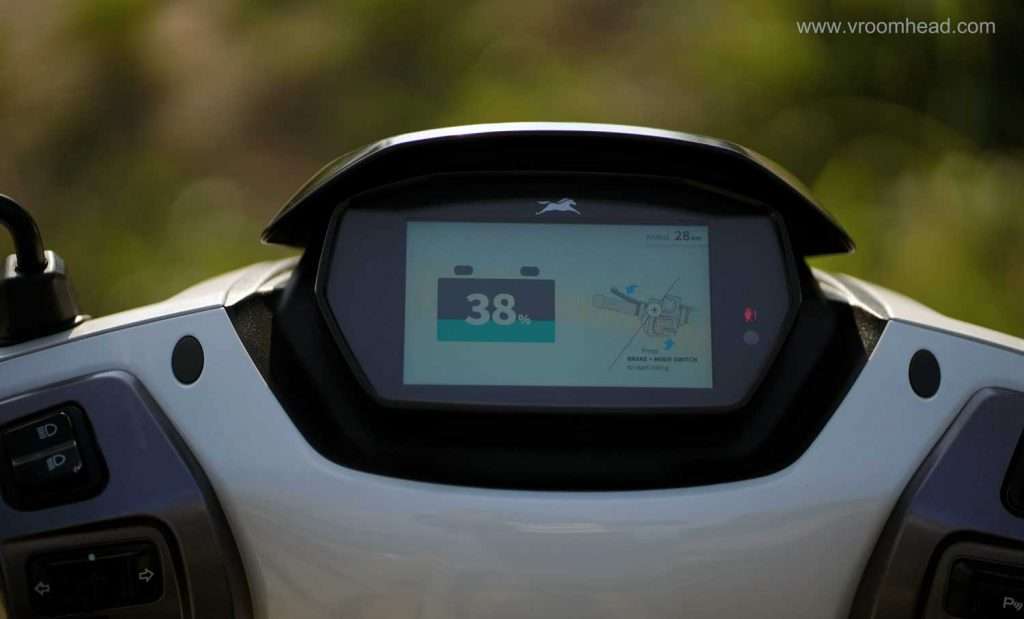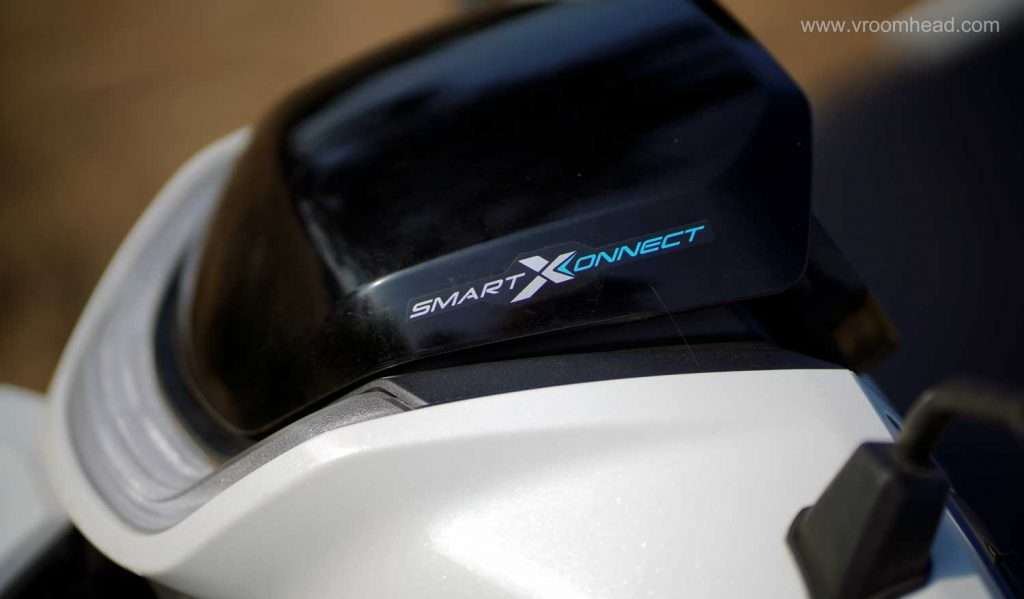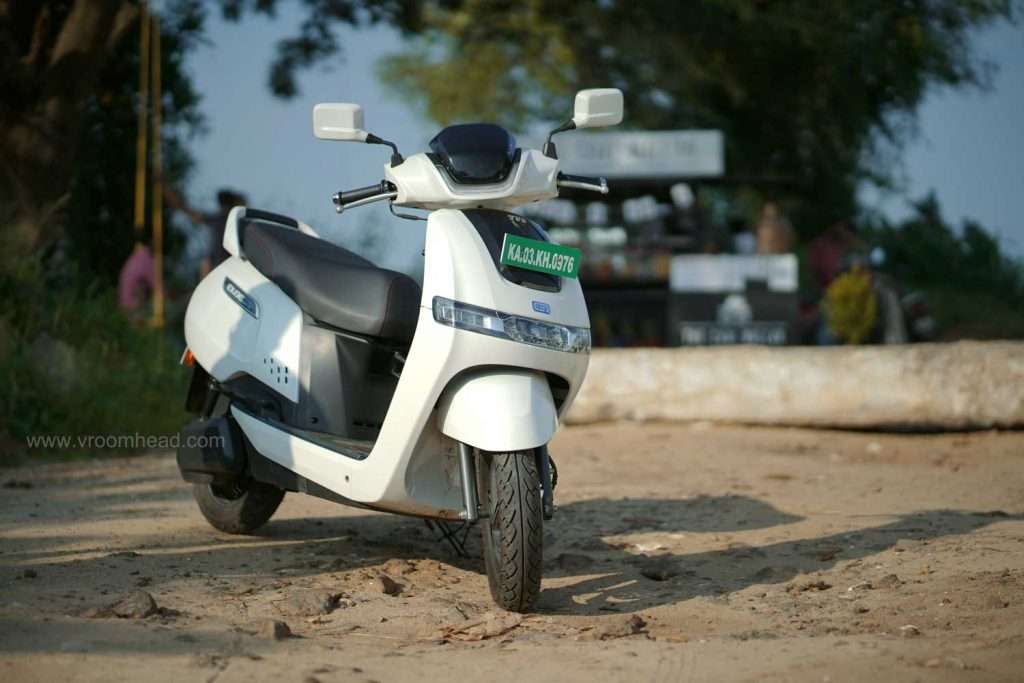We live with the TVS iQube electric scooter to find out how practical it is in the real world!
Words: Neeraj Padmakumar Photography: Amal Ramdas
TVS Motor Company had forayed into the EV space with the iQube electric scooter. The premiere had happened at a time when there were not many names competing in the electric scooter space. It continues to be the only all-electric offering from the Indian manufacturer. Here’s what it is like to live with this electric scooter.
Design
The design could be considered polarising. Unlike many Chinese e-scooters or some familiar names like Ola or Ather, it doesn’t look flashy or loud. TVS iQube looks calm, composed, and more or less like a regular petrol scooter.
The major design highlights of iQube include the sleek horizontal headlamp and tail lamp designs, decent-looking visor, thin daytime running lamp, and a silhouette that looks like that of a regular petrol scooter. The LED headlamp offers good illumination with great throw and good beam intensity. The wrap-around tail lamp design is neat. The seat is broad and supportive. Material quality is decent in most places. A nice touch would be the illuminated ‘Electric’ lettering near the rear wheel.

Features
The iQube offers a host of comfort and convenience features. It comes with decent under-seat storage, that can almost accommodate a half-face helmet without many complaints. A USB charging port and LED lamp are also provided.
The next big thing would be the large TFT instrumentation. The screen offers good display quality and resolution. All necessary information like the range, battery percentage, speed, trip, and odometer readings are displayed in a clear, clutter-free manner here. It also shows the mode the vehicle is in- Eco or Power, and if the regen is in working or not. The screen also gets Bluetooth-based connectivity and smartphone integration, much like the ones we had previously seen on the likes of TVS NTorq. A dedicated iQube app is used to connect to the vehicle and get access to its connected features like geofencing, call/SMS alerts, and turn-by-turn navigation.

TVS iQube also offers a park assist function, a familiar bit in the electric scooter space these days. This can be activated through a button on the handlebar and offers forward and reverse movements, to facilitate easier parking.
Starting the iQube would consume some time. The scooter takes around 10 seconds to start its systems, light up the screen and get operational. A few beeps are also involved in the process which we found to be annoying or intrusive at times.
Specifications
Speaking of the powertrain, TVS iQube has a 4.4kW Bosch-sourced BLDC motor mounted on the rear hub and paired with a 2.2 kWh battery pack whose cells are sourced from LG. A full charge would take around 5 hours via a wall charger, and there is no fast charging on offer yet. TVS claims ranges of up to 75 kilometers for the scooter. The 12-inch wheels, discs, and front forks come from the TVS Jupiter. However, the shocks have been recalibrated to go well with the added bodyweight. The rear suspension is a total deviation from the scooter stereotypes. To contain the hub-mounted motor well, the iQube gets two preload adjustable shock absorbers at the rear along with a proper swingarm.

Performance
While the motor is rated at a peak of 4.4 kW, it delivers a continuous output of 3 kW. The acceleration as such is quick and enjoyable. It is definitely not anything like what you would get from say, the ‘Warp’ of a competitor, but is indeed fast. 0-60 kph is achieved in around 8.6 seconds. On a more familiar note, the iQube accelerates 0.5 seconds faster than the familiar NTorq.
ALSO READ: TVS NTorq Race XP Review: Racy And Saucy!
The scooter gets dual ride modes- Eco and Power. Eco employs aggressive regen and limits the top speed to 45 km/h, and would offer ranges of up to 75km. The Power mode will push the vehicle to indicated speeds of 76 kph. Here, however, the effective range would drop to 55 kilometers. One great thing about the scooter is that the performance does not decline with charge-drops.
The vehicle’s regen is not too intrusive or aggressive but offers decent deceleration and significantly improves the overall efficiency.
The brakes (220mm disc at the front and 130 mm drum at the rear) feel progressive in action and offer good bites. Overall braking performance is decent and is backed well by the effective weight distribution. The total weight stands at 118 kilograms, which is slightly higher than that of the NTorq.
Ride And Handling
The ride quality is remarkable. iQube feels comfortable in most road conditions. It is in fact, one of the most comfortable electric scooters you can buy today. The handling is well sorted too. It feels planted and mature around corners. Despite having a hub-mounted motor, the weight distribution and balancing are well-sorted. TVS has split the battery pack into three units and placed them wisely to attain a better weight balance. The weight bias now feels towards the front and is backed well by the suspension. Overall, the vehicle feels like a normal petrol scooter in terms of handling.
The overall ergonomics are familiar. You are comfortable on the wide seat, the handlebar is low and the floorboard wide. It feels almost like riding a regular petrol scooter.

Price, Rivals, And Verdict
The iQube is priced competitively. You can know more about the prices here. The scooter benefitted greatly from the recent FAME ll revision. The competition is now heating up with the likes of Ather 450 Plus, and Ola S1 rolling out. Ask us if the iQube makes sense? Well, it is a great option to consider for an all-electric family commuter. This would be a perfect pitch to a crowd looking for something like an Activa or a Jupiter, maybe. The key takeaways would be lower running and maintenance costs, and greener commutes. However, the daily commute distances should be 50-60 kilometers, to keep clear of any range anxiety.
Let’s get social! Follow Vroom Head India On Google News, Koo, Twitter, Facebook, Instagram, Pinterest, Whatsapp, and LinkedIn.









